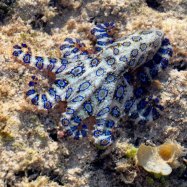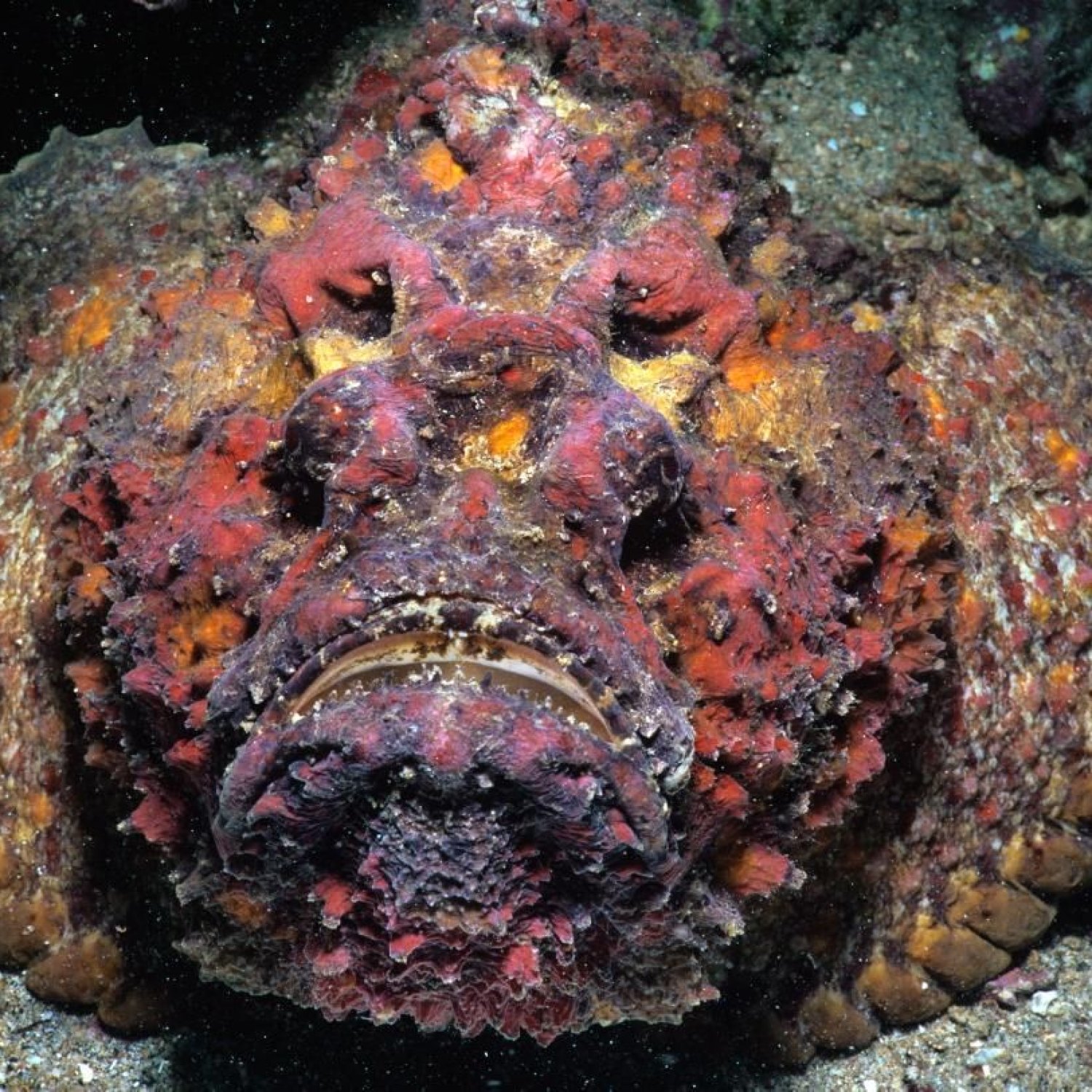
Stonefish
Up to 50 cm (20 inches)
The stonefish, from the Synanceiidae family, is a venomous fish found in coastal waters. It can grow up to 50 cm (20 inches) with a flat and broad body shape, and its wide mouth and large pectoral fins make it a formidable predator. Beware of stepping on them as their venomous spines can cause excruciating pain and even death. #stonefish #coastalwaters #venomousfish
Animal Details Summary:
Common Name: Stonefish
Kingdom: Animalia
Habitat: Coral reefs, rocky shores, and muddy or sandy bottoms
The Deadly Stonefish: Masters of Disguise in the Depths of the Sea
Imagine walking along a sandy beach, enjoying the warm sun and gentle waves, when suddenly you feel a sharp, searing pain on your foot. You look down to see a small but deceptively beautiful fish, with mottled gray, brown, or greenish skin speckled with patches and spots. This seemingly innocuous creature is none other than the stonefish, one of the deadliest creatures found in the sea.Stonefish, known scientifically as Synanceia, are a species of venomous fish that inhabit the Indo-Pacific region, with a majority of the population found in Australia Stonefish. They are notoriously known for their expert camouflage, using their coloration and body shape to blend in seamlessly with their surroundings. In this article, we will dive deep into the world of the stonefish, exploring its biology, habitat, feeding habits, and the dangers it poses to humans.
The World of Stonefish: A Family of Death
The stonefish is a part of the family Synanceiidae, a group of venomous fishes known for their ability to camouflage themselves while lying in wait for their prey. This family consists of five genera and over 50 species, with the stonefish being the most well-known and feared.Scientifically known as Synanceia, which loosely translates to "together in death," stonefish are a fitting embodiment of their name. They have sharp dorsal spines that are capable of injecting a lethal venom, which in rare cases can even be fatal to humans. These spines are located on the fish's back, and they use them as a defense mechanism when they feel threatened.
A Master of Camouflage: The Physical Appearance of Stonefish
At first glance, the stonefish may appear to be just another boring fish found in the depths of the sea. But upon closer inspection, one can understand why it is sometimes referred to as the "world's deadliest fish Styracosaurus." Its mottled skin, contrary to its dull appearance, is what makes it an expert at camouflage. This camouflage allows the fish to blend in with their surroundings, making them almost invisible to predators and prey alike.The stonefish's body is flat and broad, with a wide mouth and large pectoral fins. Its body shape allows it to lie motionless on the sea floor, resembling a rock or a piece of coral. This kind of posture, combined with its coloration, gives it the perfect disguise, making it almost impossible to spot by potential predators.
Habitat and Distribution: Where Can You Find Stonefish?
One of the most intriguing aspects of the stonefish is its habitat and geographical distribution. They can be found in various marine environments, such as coral reefs, rocky shores, and muddy or sandy bottoms. This diverse range of habitats allows them to thrive in different ecosystems, making them one of the most adaptable creatures in the sea.Stonefish are commonly found in the shallow coastal waters of the Indo-Pacific region, with a majority of the population residing in the warm waters of Australia. However, they have also been spotted in other areas, such as the Red Sea, Japan, and the Philippines.
Feeding Patterns: The Wait-and-Watch Technique of Stonefish
Like most venomous creatures, the stonefish is primarily a sit-and-wait predator, relying on their expert camouflage to catch their prey. They often remain motionless on the sea floor, waiting for unsuspecting fish to swim by, and then using their lightning-fast reflexes, they strike their prey with their venomous spines.Their diet consists of small fish, crustaceans, and even other stonefish. They are known to have an incredible appetite, capable of consuming prey almost as big as themselves. However, they do not rely solely on their venomous strike; they also have powerful jaws that help them in crushing their prey.
A Painful Encounter: The Dangers of Stonefish to Humans
It is often said that beauty can be deceiving, and this rings true for the stonefish. Despite their small size, they are considered one of the most venomous creatures in the ocean. Once disturbed or stepped on, the fish releases neurotoxic venom through its dorsal spines, leading to excruciating pain and, in severe cases, paralysis or even death.A sting from a stonefish can be incredibly painful, with victims reporting feeling like they have been struck by a hot iron or electrocuted. In some cases, the pain can last for hours or even days. Moreover, their venom is potent enough to kill a human within a few hours, if left untreated.
However, it is important to note that stonefish stings are relatively rare, and most encounters happen when someone accidentally steps on them while swimming or walking along the beach. It is always advised to seek medical attention immediately if stung by a stonefish, as antivenom is available, and prompt treatment can help reduce the severity of symptoms.
A Grim Future: The Threats Facing Stonefish
Unfortunately, like many other creatures, stonefish are also facing several threats to their survival. The most significant threat being overfishing, as they are often caught as bycatch or for their supposed medicinal benefits. In some countries, they are also used in traditional medicine, adding to their already declining population.Another factor contributing to their decline is the destruction of their natural habitat, such as coral reefs, due to pollution, climate change, and destructive fishing practices. If these threats continue unresolved, it could have devastating consequences for the future of stonefish and other marine creatures.
In Conclusion: Appreciating the Stonefish with Caution
In conclusion, the stonefish is a fascinating and intriguing creature that has mastered the art of camouflage and survival in the ocean depths. While they may be feared and avoided due to their venomous sting, they are an important part of the marine ecosystem and deserve our respect and protection.Next time you find yourself near the shores of Australia, remember to tread carefully and keep an eye out for any hidden dangers lurking at your feet. The stonefish may be small, but it is certainly one of the most deadly creatures that call the sea their home.

Stonefish
Animal Details Stonefish - Scientific Name: Synanceia
- Category: Animals S
- Scientific Name: Synanceia
- Common Name: Stonefish
- Kingdom: Animalia
- Phylum: Chordata
- Class: Actinopterygii
- Order: Scorpaeniformes
- Family: Synanceiidae
- Habitat: Coral reefs, rocky shores, and muddy or sandy bottoms
- Feeding Method: Sit-and-wait predator
- Geographical Distribution: Indo-Pacific region
- Country of Origin: Australia
- Location: Coastal waters
- Animal Coloration: Mottled gray, brown, or greenish with patches or spots
- Body Shape: Flat and broad with a wide mouth and large pectoral fins
- Length: Up to 50 cm (20 inches)
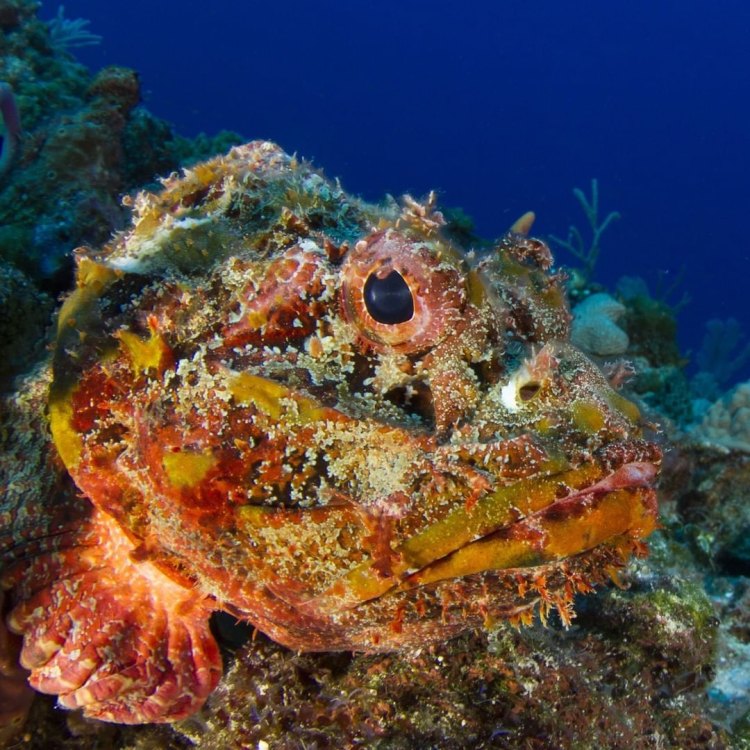
Stonefish
- Adult Size: Around 30 cm (12 inches)
- Average Lifespan: Up to 15 years
- Reproduction: Sexual reproduction
- Reproductive Behavior: Females release eggs, which are fertilized externally by males
- Sound or Call: No specific sounds or calls
- Migration Pattern: Non-migratory
- Social Groups: Solitary
- Behavior: Camouflages itself among rocks or coral, venomous spines
- Threats: Habitat destruction, pollution, and overfishing
- Conservation Status: Not evaluated
- Impact on Ecosystem: Top predator, maintain ecological balance
- Human Use: Occasionally caught for human consumption
- Distinctive Features: Venomous spines, mottled coloration, camouflaged appearance
- Interesting Facts: Has one of the most powerful venoms in the animal kingdom
- Predator: Few natural predators
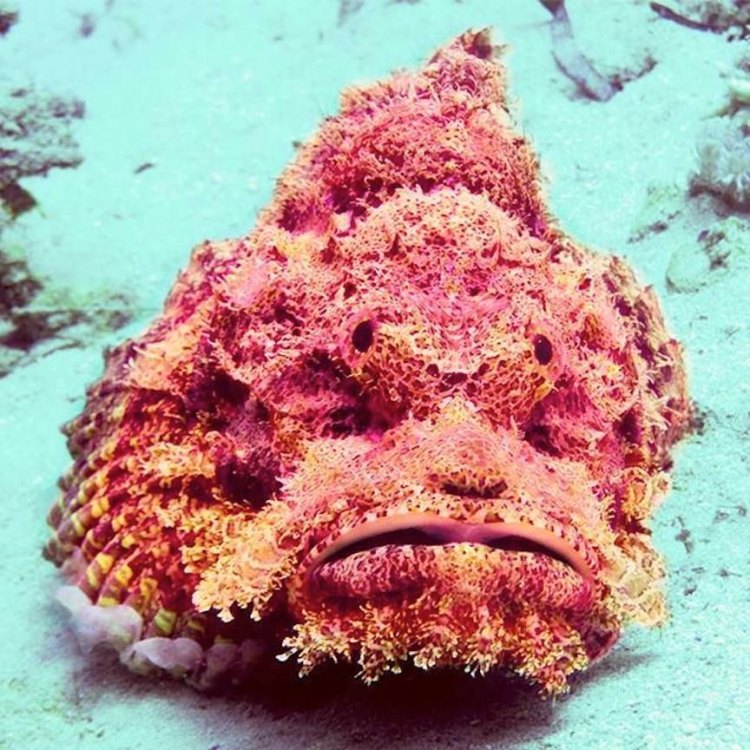
Synanceia
The Deadly and Fascinating Stonefish: A Master of Camouflage and Venom
The ocean, with its vast depths and abundance of life, is a source of fascination and mystery for many. Hidden beneath the waves lies a world of complex ecosystems and creatures, each with their own unique features and behaviors. In this mesmerizing realm, one creature stands out for its incredible abilities and reputation as one of the deadliest animals in the world - the Stonefish.Also known as the Synanceia, the Stonefish is a master of camouflage and possesses one of the most potent venoms in the entire animal kingdom PeaceOfAnimals.Com. From its elusive and solitary nature to its powerful impact on the ocean's ecosystems, there is much to learn about this fascinating and dangerous creature.
Size, Lifespan, and Reproduction
The Stonefish is a relatively large and robust fish, with an average adult size of 30 cm (12 inches). It can be found in various warm waters throughout the world, including the Indo-Pacific region, the Red Sea, and the Great Barrier Reef. Its average lifespan can range from 5 to 15 years, making it a relatively long-lived fish in comparison to others in its habitat.
When it comes to reproduction, Stonefishes engage in sexual reproduction. Males and females will come together during the breeding season, which can occur throughout the year. The females will release their eggs into the water, and these eggs will be fertilized externally by the males. This process can result in hundreds of tiny larvae that will eventually grow into the distinctive adults we know.
Reproductive Behavior and Noises
Stonefishes are solitary creatures, meaning they do not typically engage in social groups or behavior Sandhill Crane. However, during the breeding season, males and females will interact briefly to mate. Apart from this, they are known to be relatively solitary and elusive, spending most of their time camouflaged and hidden among the rocks and coral.
Interestingly, Stonefishes do not make any specific sounds or calls. They are masters of stealth and do not rely on any vocalizations or noises to communicate or defend themselves. This further adds to their elusive and mysterious nature.
Migration Pattern and Social Groups
Unlike other marine creatures, Stonefishes are non-migratory. Once they find a suitable habitat, they will stay there indefinitely. Their solitary nature also means that they do not form social groups or engage in any communal behaviors. They prefer to live and hunt alone, making them even more challenging to spot in the wild.
Behavior, Camouflage, and Venom
One of the most fascinating and distinctive features of the Stonefish is its behavior and appearance. As its name suggests, the Stonefish is a master of camouflage, blending seamlessly into its environment. Its mottled coloration and rough scales resemble the rocks and coral it resides among, making it nearly impossible to spot by predators or prey alike.
Additionally, the Stonefish possesses venomous spines along its dorsal fins, which are used as a form of defense and attack. These venomous spines, when disturbed or touched, can inject a potent neurotoxin into its victim, causing excruciating pain and even death. In fact, the Stonefish's venom is one of the most powerful in the animal kingdom, capable of killing a human within hours if left untreated.
Threats and Conservation Status
Despite its deadly reputation, the Stonefish is not considered a conservation concern, mainly because its population size and distribution are still relatively unknown. However, like most marine creatures, it is threatened by human activities such as habitat destruction, pollution, and overfishing.
As a top predator in its ecosystems, the Stonefish plays a crucial role in maintaining ecological balance. Its camouflage and venom make it an efficient hunter, keeping prey populations in check and preventing them from overpopulating and harming the ecosystem. Thus, the disappearance or decline of Stonefish populations can have a ripple effect on the entire marine ecosystem.
Human Use and Distinctive Features
Occasionally, Stonefishes are caught for human consumption in some parts of the world, but their meat is not considered very palatable and is often avoided due to the risk of being stung by the venomous spines. However, in some cultures, the Stonefish is considered a delicacy, and its sharp spines are carefully removed before cooking.
Apart from its camouflaged appearance and venomous spines, the Stonefish also possesses a unique feature - it has two eyes on the top of its head, making it the only fish to have this characteristic. This placement of the eyes is another adaptation that helps it blend into its surroundings and remain undetected by predators or prey.
Interesting Facts and Natural Predators
Besides its powerful venom and ability to camouflage, the Stonefish has many other fascinating features that make it stand out in the vast ocean.
For example, it is known to be a slow swimmer, but it can use its strong pectoral fins to "walk" or hop across the ocean floor. This behavior, coupled with its mottled coloration, has earned it another nickname- the "walking fish."
Furthermore, despite its venom and incredible defense mechanisms, the Stonefish has few natural predators. Some species of shark and rays may occasionally prey on them, but their excellent camouflage and sharp spines make them a challenging target.
The Stonefish's impact on the ecosystem is essential, as it helps maintain the balance of marine life. Its elusive and solitary nature, coupled with its potent venom, serves as a warning to other ocean creatures not to disturb or prey on it. This, in turn, helps maintain a healthy and diverse ecosystem, making the Stonefish an essential part of its habitat.
In conclusion, the Stonefish is an enigma of the ocean, with its unique features and behaviors captivating scientists and marine enthusiasts alike. Its ability to blend seamlessly into its surroundings and possess one of the most potent venoms in the animal kingdom makes it a truly remarkable creature. As we continue to discover and learn more about this elusive fish, we must also ensure its conservation to maintain the delicate balance of the marine ecosystems it inhabits.
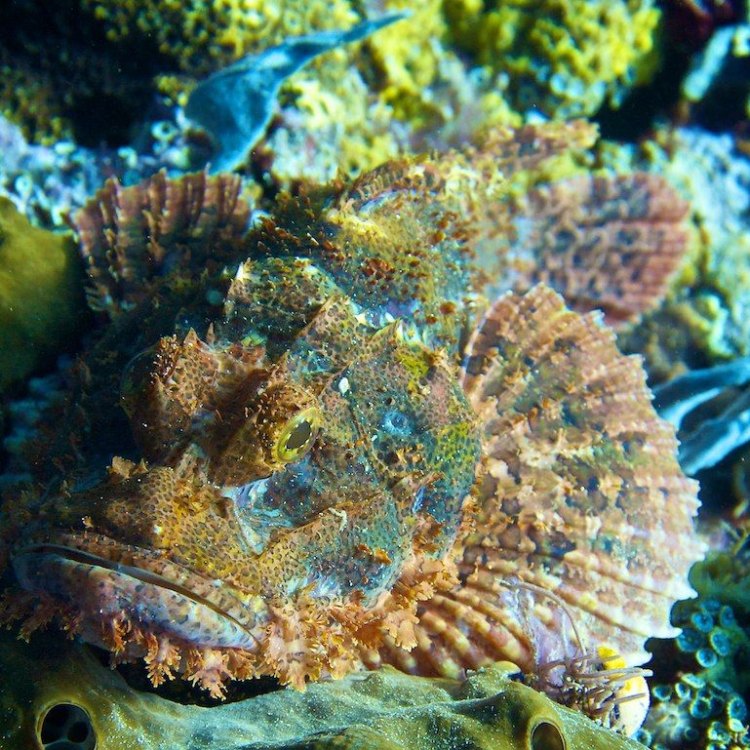
The Deadly Stonefish: Masters of Disguise in the Depths of the Sea
Disclaimer: The content provided is for informational purposes only. We cannot guarantee the accuracy of the information on this page 100%. All information provided here may change without prior notice.










